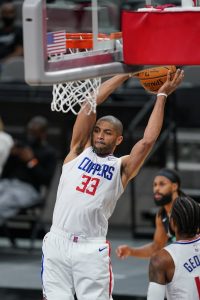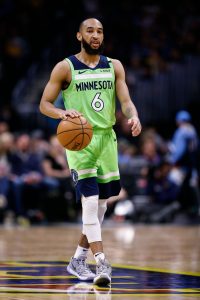We’ve reached what is generally considered the slow point of the summer, and while there are still some free agents available on the market, there’s really only one domino left to fall to wrap up this offseason: the resolution of the messy, public deterioration of the relationship between the Sixers and Ben Simmons.
Today’s news that Simmons doesn’t plan to report to training camp kicked off a fresh frenzy of speculation, with beat writers for multiple teams, most notably the Kings and Timberwolves, exploring those teams’ respective chances of landing the three-time All Star.
The Kings currently hold the best odds of landing Simmons, according to MyBookie.ag, at +275, followed by the Wolves (+400), the Warriors (+550), Blazers (+900), Spurs (+1200) and Wizards (+1900). Meanwhile, PointsBet has the Kings and Blazers at +150 each, with the Warriors at +250.
As befitting a player as complicated to build around as Ben Simmons, there are tricky questions facing each of his prospective suitors.
The Kings are desperate for a move that significantly alters the trajectory of the franchise, but are reportedly unlikely to include De’Aaron Fox or Tyrese Haliburton in a deal. That leaves Harrison Barnes, Buddy Hield, Marvin Bagley, and possibly this year’s ninth pick Davion Mitchell, as well as future picks, as the foundation for a deal.
Hield’s shooting would undoubtedly help the Sixers, as would Barnes’ all-around game, but both offer similar skillsets/roles to Seth Curry and Tobias Harris, respectively. Bagley is only a few years removed from being the number two pick and has flashed some interesting potential, shooting 34% from three this season while being an athletic rim roller and rebounder at 6’11. But his defense remains questionable and his overall game hasn’t progressed much in three years, partially due to a series of injuries that have kept him from getting a rhythm.
Mitchell, on the other hand, offers something the Sixers could desperately use. A tenacious defender with the ability to hit pull-up threes or function off-ball, thanks to his time playing alongside Jared Butler at Baylor, Mitchell could hold interest for the Sixers. But is he ready, as a rookie, to be the main point guard on a team with championship aspirations? At 22, he’s more ready-made than some rookie point guards, but that’s still a tough ask, as well as a tough sell for cornerstone Joel Embiid.
The Wolves could put together an interesting package, with D’Angelo Russell, Malik Beasley, Jaden McDaniels, Patrick Beverley, and possibly Leandro Bolmaro as pieces that could go into a deal. If the team were to trade Russell, Beasley and picks, it’s not hard to see the appeal of surrounding offensive star talents Karl-Anthony Towns and Anthony Edwards with lockdown defenders Beverley, Simmons, and McDaniels. Not to mention, McDaniels, Beverley, Towns and Edwards represents the most shooting Simmons would have been surrounded by in his career.
But is it enough? Theoretically the shooting and playmaking of Russell, combined with the shooting and attacking of Beasley, fit what the Sixers need, but it’s hardly the king’s ransom Morey has been asking for. Bolmaro is an interesting, but unproven piece, and the Wolves have their first-round picks moving forward. Wolves president Gersson Rosas also has a longstanding relationship with Morey, having worked under him for years with the Rockets.
The Warriors are perhaps the most interesting team on this list, as they have both the contracts and the young talent to make a deal work. Andrew Wiggins and Draymond Green are both making upwards of $24MM per year, while James Wiseman, Jonathan Kuminga, Moses Moody, and even young breakout wings like Jordan Poole and Juan Toscano-Anderson could be interesting trade chips.
Now, it’s almost unthinkable the Warriors would trade Green, and with Harris at the power forward spot, it’s unclear how much the Sixers would value him. Wiggins, Wiseman, one of their other young players, and future picks might not be the prettiest package for the Sixers, but there is clear value to Wiggins manning the small forward spot in Philly, and to adding depth on the bench. The problem is that would leave the Sixers without a starting point guard, which would likely necessitate a third team entering the mix.
The Blazers could see Simmons as the move to keep semi-disgruntled star Damian Lillard in the fold, though outside of CJ McCollum, Portland has little by means of assets. It’s also unclear how much a clean McCollum-for-Simmons swap would significantly change the Blazers’ trajectory, and the fit with newly-acquired Larry Nance Jr. isn’t the cleanest.
The Spurs have a good amount of solid young players, but none with the blue-chip luster that the Sixers would likely be seeking in a deal. Additionally, outside of Dejounte Murray, another poor-shooting defensive guard, and Derrick White, none of them are ready to be key members of a championship run.
Lastly, the Wizards have an interesting collection of talent, but the Sixers are unlikely to get Bradley Beal in a trade, and almost all of Washington’s other appealing players are young big men, with the exception of this year’s 15th pick, Corey Kispert. Any trade of Simmons would mean the team’s top two players are a center and a power forward, meaning it’s unlikely they would be interested in any of the Wizards’ combo forwards.
There are undoubtedly going to be more teams that enter into the discussion as the bidding war heats up, but we want to know what you think. What team is going to end up with Ben Simmons? What will they give up for him? And most importantly — will Simmons give his new team the bump they need to get where they’re going?
Take to the comments to let us know!

 Restricted free agents never have a ton of leverage, especially this deep into the offseason. Some players who remain on the market for weeks, like Markkanen, can still land player-friendly deals, but if McLaughlin or Vanderbilt have been drawing interest around the NBA as coveted sign-and-trade candidates or potential offer sheet recipients, we probably would’ve heard about it by now.
Restricted free agents never have a ton of leverage, especially this deep into the offseason. Some players who remain on the market for weeks, like Markkanen, can still land player-friendly deals, but if McLaughlin or Vanderbilt have been drawing interest around the NBA as coveted sign-and-trade candidates or potential offer sheet recipients, we probably would’ve heard about it by now.